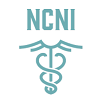Treatment for Hemorrhagic Strokes in LA
A stroke happens when the blood flow to a specific region of the brain is cut off. Brain cells get deprived of vital oxygen and nutrients and start to die out.
Hemorrhagic strokes involve a leaking or burst artery that causes bleeding inside the brain. The leaked blood proceeds to exert pressure on the brain cells and may lead to improper brain functioning. The bleeding can either occur between the brain and the skull or inside the brain.
According to Harvard Medical School, around 20% of all strokes are hemorrhagic strokes. Similar to types of strokes, this also requires immediate attention otherwise the patient can suffer from serious brain damage or death.
Hemorrhagic strokes are of two main types: intracerebral hemorrhage and subarachnoid hemorrhage. In the first condition, the bleeding happens inside the brain. In the second condition, bleeding takes place between the brain and the membranes covering it. Both types are associated with unique risk factors.
For intracerebral hemorrhage, the risk factors include cerebral cavernous malfunctions, arteriovenous malformations, and hypertension which is the most prevalent cause. For subarachnoid hemorrhage, factors include blood-thinning medication, trauma, head injury, AMVs, bleeding disorders, and aneurysm.
Common symptoms for hemorrhagic stroke include but are not limited to headaches, numbness in the leg or arm, loss of coordination or balance, vision changes, seizures, confusion, vomiting and nausea, loss of consciousness, loss of speech, being unable to move, partial paralysis, pain or stiffness in the neck area, and hand tremors.
For hemorrhagic stroke patients, doctors prescribe blood thinners to facilitate the blood flow. Additional drugs that help lower blood pressure in the brain are also recommended. After the bleeding stops, surgery may be required to prevent the blood vessels from hemorrhaging again.
Once the patient’s condition stabilizes, the focus shifts to rehabilitation. Dr. Farzin Pedouim is a board certified neurologist based in Huntington Beach and Los Angeles. He has helped numerous stroke patients recover from the ordeal and reclaim their independence.
